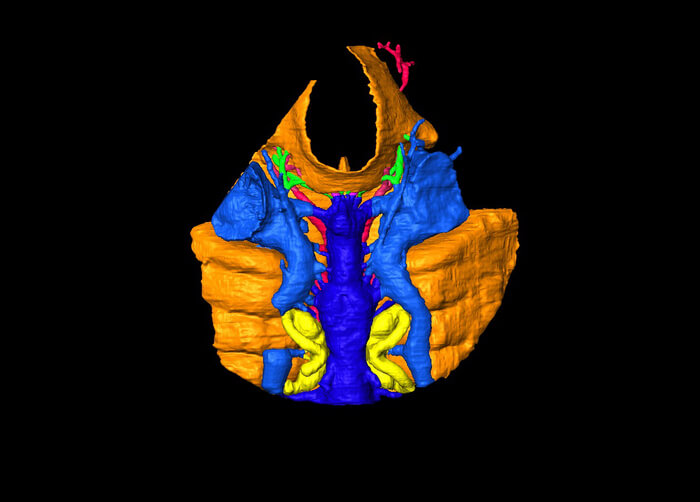
BEIJING — Have you heard? The middle ear of humans evolved from fish gills, according to a study of a 438 million-year-old fossil fish brain.
Scientists discovered the fossil of the braincase of a Shuyu fish. Despite its skull only being the size of a fingernail, they were able to recreate seven virtual casts of the brain. They also unearthed the first 419 million-year-old armored galeaspid fossil completely preserved with gill filaments.
The team from the Institute of Vertebrate Paleontology and Paleoanthropology (IVPP) of the Chinese Academy of Sciences found the spiracle, slits behind the eyes leading to the mouth, which allows some species to breathe. In sharks and all rays, the spiracle is responsible for the intake of water before being expelled from the gills.
The spiracle evolved into the ear of modern four-legged vertebrates, eventually becoming the hearing canal used for transmitting sound to the brain via tiny inner ear bones. This function has remained throughout the evolution to humans. The detail derived from the two fossils is the last piece of the jigsaw proving the line from fish gills to the human ear.
Scientists say the human middle ear houses three tiny, vibrating bones which are key to transporting sound vibrations into the inner ear. There, they become nerve impulses that allow us to hear.
“These fossils provided the first anatomical and fossil evidence for a vertebrate spiracle originating from fish gills,” says first author Zhikun Gai from IVPP, in a statement.

A total of seven virtual endocasts of the Shuyu braincase were reconstructed. Almost all details of the cranial anatomy of Shuyu were revealed in its skull, including five brain divisions, sensory organs, and cranial nerve and blood vessel passages.
The fossils found in Changxing, Zhejiang Province and Qujing, Yunnan Province were hailed as the “missing links” from the gill to the middle ear.
“Many important structures of human beings can be traced back to our fish ancestors, such as our teeth, jaws, middle ears, etc,” says professor Min Zhu, academician of the Chinese Academy of Sciences. “The main task of paleontologists is to find the important missing links in the evolutionary chain from fish to humans. Shuyu has been regarded as a key missing link as important as Archaeopteryx.”
Adds professor Per Ahlberg from Uppsala University and academician of the Royal Swedish Academy of Sciences, who collaborated on the research: “Our finding bridges the entire history of the spiracular slit, bringing together recent discoveries from the gill pouches of fossil jawless vertebrates, via the spiracles of the earliest jawed vertebrates, to the middle ears of the first tetrapods, which tells this extraordinary evolutionary story.”
The study is published in the journal Frontiers in Ecology and Evolution.
South West News Service writer Jim Leffman contributed to this report.
